Maybe it started 20 years ago, when I met with a monk in a tiny, dim room on a dry, barren mountainside in California. I was an ordained minister, a doctoral student, a spiritual director, and I had a longing in my heart that felt unrequited. He said to me, “That longing, that absence — that’s a sign of the presence of God.” Things inside me tilted as I tried to take that in.
Or maybe it started 10 years ago, when I had just finished meditating in a candlelit corner of my silent snowbound home in New Denver, B.C. As I began to gather myself for the day, I stopped. Words filled my mouth, and I found myself saying aloud, “My mind is the servant of my heart.” I felt like I’d committed intellectual heresy. I felt like I’d been baptized with fire.
You may unsubscribe from any of our newsletters at any time.
Maybe it was both of those moments, and all the moments in between, when I said yes to something that I didn’t understand, yes to something that offended my well-trained mind. Maybe it was the slow work of learning to trust that the Holy wasn’t going to show up in a way that could be analyzed, categorized and filed.
Whatever it was, I found myself at my computer two and a half years ago, filling out the application for Living School. I didn’t want a guru or a new spiritual technique; I wanted to confront my fears. I wanted to burn away the internal junk that got in the way of being fully alive, fully of service. I wanted to have my consciousness changed.
More on Broadview: 7 questions for Richard Rohr
Living School is a two-year program offered through the Center for Action and Contemplation (CAC) in Albuquerque, N.M. Fr. Richard Rohr started the CAC in 1987 after noting that most social activists were not happy — and most spiritual seekers weren’t activists. The Franciscan priest and author wanted to help activists and seekers alike to experience the transformation that occurs when Christian contemplation is married to service. Now in its seventh year, Living School receives up to 600 applications annually, but accepts only about 200 students into its immersive program.
I’ve known about Living School from the get-go because I’ve been a Rohr fan for years. I’ve studied many of his 30-plus books, and along with more than 340,000 others, I’m a recipient of his daily email meditations. And, having been accepted into Living School in 2018, I’ve spent the last year and a half under his tutelage, engaged in the deep soul work that my heart craved.
Changing one’s consciousness may sound like an oddly New Age goal for a Christian. But for those who have poured out of Living School with changed vision and renewed purpose, changing one’s consciousness is the essence of the Christian message.
Rohr defines a change of consciousness as being about “things as practical as changing [students’] politics, their economics, their sense of what religion [is] about.” Rev. Cynthia Bourgeault, another Living School faculty member, says it’s not what you see, but where you see from — the heart.
“Heart” is not understood here as sentiment or feeling, but as a place of perception that is capable of holding paradox. Unlike normal binary perception, which perceives through difference, heart-centred consciousness perceives through wholeness. It hears harmony instead of separate notes. It sees the undivided goodness of all that is, experiences God as the root and spark of everything. Heart-centred consciousness, also called non-dual consciousness, is a shift in experience, not an intellectual concept.
“All well and good,” you might say. “Sounds great,” I said. But while I yearned for this kind of seeing, I had no idea how to do it.
The “Starter Kit of Wisdom,” a guide given to all incoming students, emphasizes that the journey to heart-centred consciousness travels directly through the unconscious; and once you start on that path, you can expect to find an unholy internal riot. How to deal with the long-standing pain that is going to crop up? Stand with it. Emptiness, boredom, fear? Hold them lovingly. Usual coping mechanisms? Expect them to stop working. The horrors of imperfection? Practise patience with yourself and others.
As author Paula D’Arcy says, “God comes to you disguised as your life.” And “our life” stretches beyond our individual selves to encompass the whole messy world, all of it providing the raw material necessary to open eyes and hearts. Rohr is adamant about the necessity to name injustice, deceit and evil. But he is equally emphatic that the response to these realities must proceed from a heart-centred consciousness.
Thus you will find that mystics, monks and philosophers share the Living School stage with issues of race, class, sexual orientation and climate crises. For Rohr, mysticism without active concern for the world simply isn’t Christian. In fact, the primary focus during the final six months of Living School is to find your particular work of contemplative solidarity with the suffering world.
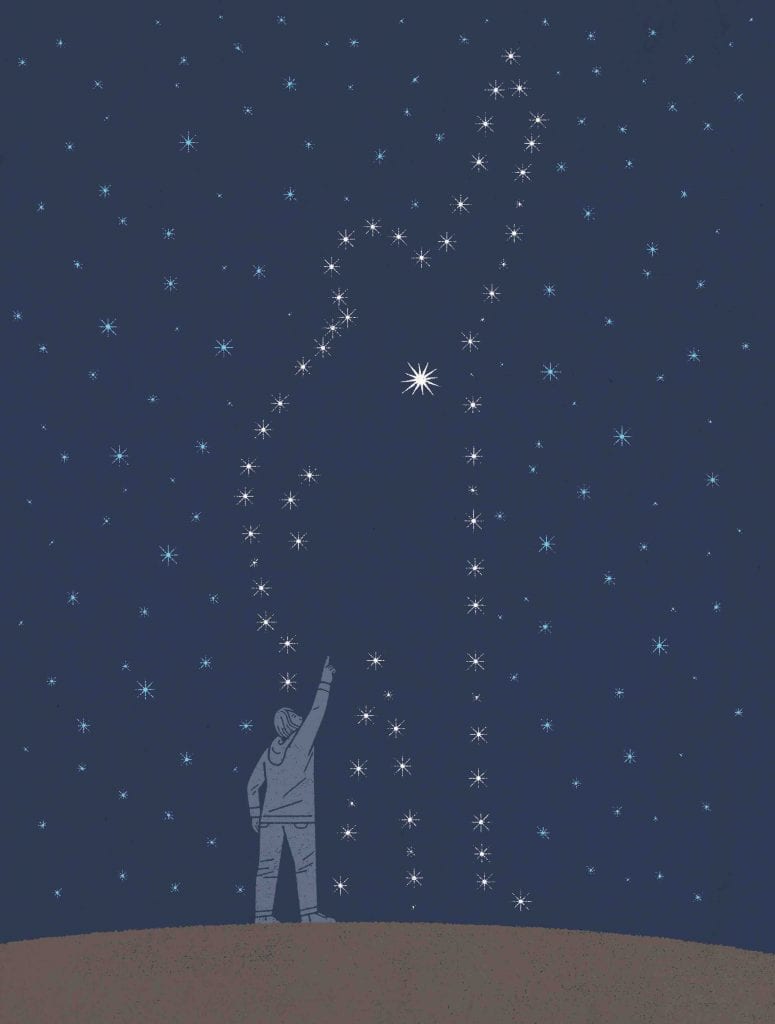
It’s a sultry August morning in New Mexico in 2018. I’ve just arrived at the Hotel Albuquerque to find a river of people wearing name tags colour-coded to their cohort — that is, the year in which they will complete the program. Donning a 2020 badge, I find someone with the same colour as mine and smile awkwardly.
We’re ushered into an enormous ballroom where three cohorts — about 600 people — are talking and laughing. This feels like the opposite of contemplative, and I wonder what I’ve gotten myself into. But next to me is Greg Lyndon, a lawyer from Saskatchewan and a member of my cohort. After chuckling in relief at finding another Canadian, we talk about work and gradually go deeper, sharing the profound pain we both experience because of our inability to help the children who suffer in our communities. For the first time in my life, I sense that I am surrounded by people who are willing to say that their heart aches the way mine does.
The next day, I attend a gathering of Canadians in the program and connect briefly with two more members of my cohort: Georgia Brown, a registered clinical counsellor from Kelowna, B.C., and Pierre Legault, an activist and social entrepreneur from Montreal. Brown tells me later that she has come because, while she still has faith, she can’t find a spiritual community that fits. Legault — who started the first food bank in Quebec — longs to rekindle his “secret fire.” All of us are excited, afraid, wondering.
Living School’s immersive education starts at the deep end of the pool, with students learning to swim in a place where spirituality intersects with physics, philosophy and current events. The core curriculum features twice-yearly weeklong seminars in Albuquerque, video lectures and a vast reading list that includes contemporary philosophers like Ken Wilber, physicists like Joel Primack, theologians like Raimon Panikkar and Ilia Delio, and classical mystics like Julian of Norwich. Then, as if to frustrate you completely, you’re instructed to read contemplatively: slowly, with your heart open.
Stacks of texts aside, the heart of Living School actually lies on a single sheet of paper entitled “A Rhythm of Life.” Four headings divide the page: contemplative prayer and meditation; contemplative study; contemplative community; and contemplative solidarity. Under the headings are brief explanations of each area, and a space for the student to write their personal commitment to the tasks. Steady, dedicated practice in these four areas creates a kind of internal pressure cooker, intended to bring about the capacity to see life non-dualistically.
It’s not all or nothing, of course. Insights are often followed by blunders; I’ve felt my heart open wide in the morning and been a jerk to my husband in the afternoon. Moments of awakening are understood as gifts rather than achievements. But you can make yourself ready for the gift. Hence, Living School teaches centring prayer, chanting, walking meditation and lectio divina, an ancient form of contemplative reading. Twice-daily meditation is strongly recommended; practising, as opposed to learning about practices, is key.
Achieving “spiritual experiences,” however, is not the goal of the program. In fact, mystical encounters are often ego-inflating, and without the right grounding they can become stumbling blocks. Participants are expected to grow psychologically and emotionally too, and confronting one’s own ego is central to that work. Brown, who lamented the difficulty of finding a church where she fit, said recently that she has “come to see my part in not being part of a community.” Lyndon laughingly said, “The chains of my ambition and my cherished beliefs and the way I saw myself in the world of law — [they] had to go!”
Another element of the program is circle group, a regular hour-long video conference with a small band of companion students. Circle group is the place where you learn to listen to yourself and to one another, where egos and agendas are exposed, and where you discover that your own life is as worthy a study text as any of the books on the curriculum. It is in circle group that practice and theory become real.
It’s 5 p.m. on a Wednesday in late fall. The dog has been fed, dinner is in the oven and I have my earbuds in; it’s time for my circle group video-conferencing call. Our group of eight ranges in age from 36 to 73; we live in the United States and Canada but hail from four different countries. Our professions encompass ministry, social work, psychotherapy, teaching, farming, spiritual direction, change-work consulting and writing.
Pam Birrell, a psychologist and retired professor, is moderating today. She rings a bell to begin and after a short silence reads the norms by which we conduct our time together. Birrell then asks us to consider a question drawn from the material we are currently reading. Silence falls. As we feel moved, we speak; when we’re done, we say, “That’s what I have to offer.” People bow in silent thanks, and the quiet stretches until someone else gives voice. We do not fix, correct or applaud what’s been said. We simply hear each other’s truths and hold each other’s souls.
During the first week of Living School, I had a scorching experience of how this simple, difficult process works. Still in Albuquerque, our circle group met in person. We had plans to gather for dinner the following night, and because I’m a recovering alcoholic, I asked the group if we could refrain from drinking. Then, as the process dictated, the group gave no response. For the next 24 hours, I felt awash in shame and vulnerability. That is, until something shifted in my soul, something that went far beyond the momentary relief I’d have felt if the group had reassured me: I saw myself through the compassionate eyes of God.
Toward the end of our hour together, Birrell reads our closing prayer, inspired by the letters of Jesuit philosopher Pierre Teilhard de Chardin. It begins, “Trust in the slow work of God,” and closes, “and accept the anxiety of feeling yourself in suspense and incomplete. Above all, trust in the slow work of God.” I let those words sink in. What would it be like to really trust?
Fifteen months into the program, members of our circle group still struggle to articulate how meditation, study and daily life are shifting, colliding, enriching each other. One member speaks of a cancer diagnosis, another contemplates leaving her work, a third whispers of breakthroughs and breakdowns. And we now share more than virtual meetings. We have stood together on the bare winter banks of the Rio Grande, listening to the sandhill cranes fly over us. We have sent poetry, book suggestions and pictures of our pets across the ether. We phone each other when things are hard and get together for meals when we’re in the same town.
Most importantly, we are learning to live and speak — however haltingly — the inner wisdom of the heart.
I wanted to burn away the internal junk that got in the way of being fully alive, fully of service. I wanted to have my consciousness changed.
You might rightly ask, “So what? Does Living School do anything besides help you find like-minded people?” Recently, I put the “So what?” question to past and present students to find out what had changed in their lives as a result of Living School.
For students in my cohort, the changes have been surprising, and not without pain. It’s not always clear if you’ve jumped or been pushed off a cliff, as Lyndon put it. Some have left jobs; others are seeing themselves with painful clarity. But nearly everyone told me that they were less anxious, less restless and are bringing greater clarity to their work. Brown is more adept at discerning life-giving connections. Legault reports a new-found ability to participate rather than direct. Lyndon is feeling his way into being both a prosecutor and a mystic.
Members of earlier cohorts, like William Brook — a molecular biologist from the University of Calgary — says, “I have a sense of centredness that I don’t recognize as being part of my life before.” Anna Byrne, a hospice co-ordinator in Powell River, B.C., speaks of belonging to a tradition that transforms suffering. Tim Senger, a semi-retired software designer from Edmonton, speaks of a gradual move from his head to his heart. Nadia Sandor, a Toronto audiologist, brings the Living School message to her Ukrainian Catholic community. Roger Roy, a community parole officer from Dalmeny, Sask., notes his increased ability to see the goodness in his clients. Joanne Van Beek, a former member of a conservative Christian church from Leduc, Alta., feels the program made it possible for her to remain within Christianity. “That doesn’t mean I can’t walk on the outside edge of it,” she says.
More than one Living School student told me they long to share what they’ve learned more widely, but they can’t always find anyone who wants to hear. As Brook, who recently became a part-time seminary student, said wistfully, “There has to be a spot in the church for this.”
And me? One of the truisms of spiritual development is that you always think you are further along than you really are. So rather than embarrass myself by claiming too much, I asked my husband, George Meier, what he sees. “It’s profound,” he says. “You’re more engaged, more alive, more excited about the unfolding of love and justice — and this in the face of everything that’s going on in our world today.”
So when people ask me about Living School, you can see why I’m tongue-tied. How do you say that you’re learning to marry your ache for the suffering world to your longing for the Holy? How do you say that you are intentionally asking to be set on fire?
I used to joke that Living School was a program for wannabe mystics. But that response does not keep faith with my awakening heart. So I stammer about wanting to root my activism in Christian contemplative practice, and my spiritual practice in solidarity with the living world. About the world being desperate for people who are grounded in silence and generosity, vision and justice.
I don’t expect to get there, mind you, but I hope to die trying. But where and to whom can you say that without sounding crazy?
I can say it in Living School. I’m learning to say it in the world.
This article first appeared in Broadview’s March 2020 issue with the title “Soul work.”
Broadview is an award-winning progressive Christian magazine, featuring stories about spirituality, justice and ethical living. For more of our content, subscribe to the magazine today.




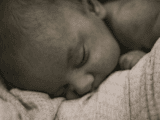




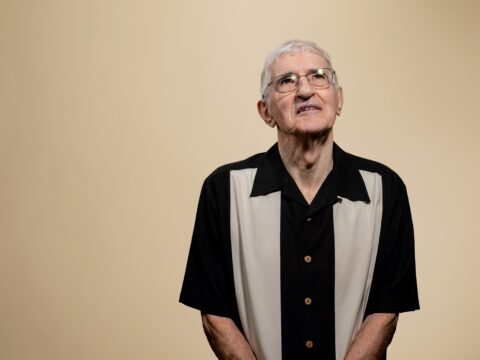


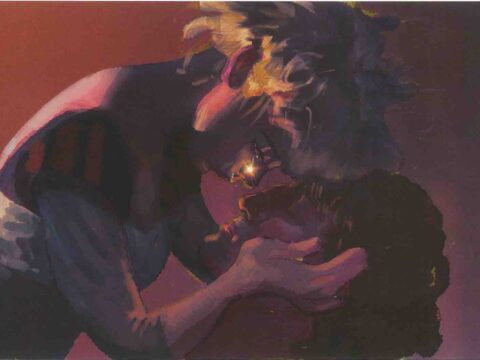
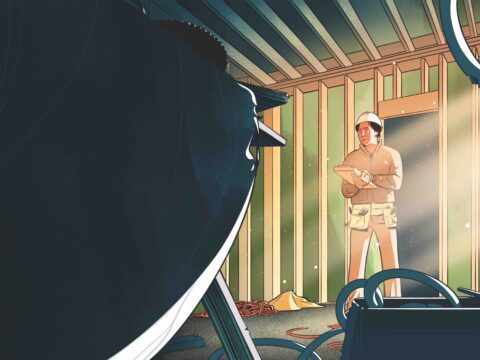
Does the writer not know the greatest commandment?
We are to love God with all our heart, all our soul and all our minds. Note: the mind does not override the heart or vcee versa.
Hebrews 9:14 tells us upon belief that our consciousness has been changed. Why as a Christian would you want it changed again?
“most social activists were not happy — and most spiritual seekers weren’t activists” How true – the Jews wanted a revolutionist and when disappointed, wanted Christ crucified. Christ was definitely not a political activist, nor did he advocate activism. If He was an activist, did anything change after He died? Do we still have poor, blind, and lost?
What did his followers have to offer? Peter gave a lame man the ability to walk, and to others, there a sermon on salvation.
As mentioned in the other article, this is the gospel according to Richardism.
I agree we need to look at and examine our lives in relation to Christ, and we need to “love our neighbours,” but these can easily be done with a sincere heart while reading our Bible, and putting into practice what Christ commanded us. Christ never had a “sit in”, or the like to promote justice and peace.
Christianity is not a “feel good” philosophy, it’s a reconciliation between us and God – nothing more
I really appreciated you telling your story as I am currently considering applying to the Living School. So much of what you say resonated with both my heart and my own struggles. I feel both excitement and the challenge. Bless you for sharing this. With gratitude.